Is this not quite what you're looking for?
If we don't have what you're looking for in stock, we'll see if we can find it for you - fill out the form below and we’ll be in touch.

Do you have Used Metalworking Equipment you want to sell?
We buy single machines up to complete plants.
What is a Milling Machine?
A milling machine is a heavy-duty precision cutting tool that allows you to combine the precision of manual milling with the speed of a computer-controlled CNC milling machine tool which typically includes a digital readout. Unlike a lathe, the milling head allows for face milling using a rotating cutter to create precise changes in the surface of the material being milled, which can often be moved along the X axis and Z axis to make different cuts possible by the milling cutter into the desired shape. Because it delivers a very high degree of accuracy, it allows a machine shop or production line to quickly replicate parts and tools, so that the business can operate more quickly and with fewer labor inputs.
What Kind of Features Should I Look for in a Milling Machine?
There are a lot of different features available in conventional milling machines, and what you’ll need will depend on your needs during the milling process. Here’s a comparison of some of the most common you’ll find available based on the basic components of the equipment. Horizontal Milling Machine Vs. Vertical Milling Machine Generally, a universal milling machine is simply defined as a rotating spindle that allows materials to be removed. However, it’s the spindle axis that determines whether it’s a horizontal milling machine or a vertical milling machine. On a horizontal milling machine, the spindle axis moves along the X axis, or horizontal axis. By comparison, a vertical milling machine moves the spindle axis along the Y axis, or vertical axis.
Variable Speed
A variable speed head milling machine is fairly common, and it allows the spindle speed to be adjusted to provide the best possible cut of the production piece, depending on the type of material being used. This makes it ideal in custom shop and repair applications, rather than mass production, though it can increase the value of mass production milling equipment as well by providing flexibility for changes in the line.
Rotary Table
Not typically as useful on a CNC mills, which can move the part along a range of the different axis, a rotary table is generally very handy on a manual milling machine. Because the machinist must move the part through a range of different positions, the rotary table is a flat surface that makes it much easier for you to access different areas of the part being milled.
Turret and End Mills
Used in the 19th century, turret mills have often fallen by the wayside, with one exception: mold making. The high level of rigidity these mills have make it an excellent option for the precision required in mold making. Similarly, end mills have rotary cutters on the nose and sides to help remove material from the surface of your workpiece.
If you’re considering investing in a milling machine, the exceptional variety available through our website is certain to have what you’re looking for. Take a look at our available machines, whether you’re looking for a CNC or manual machine.
